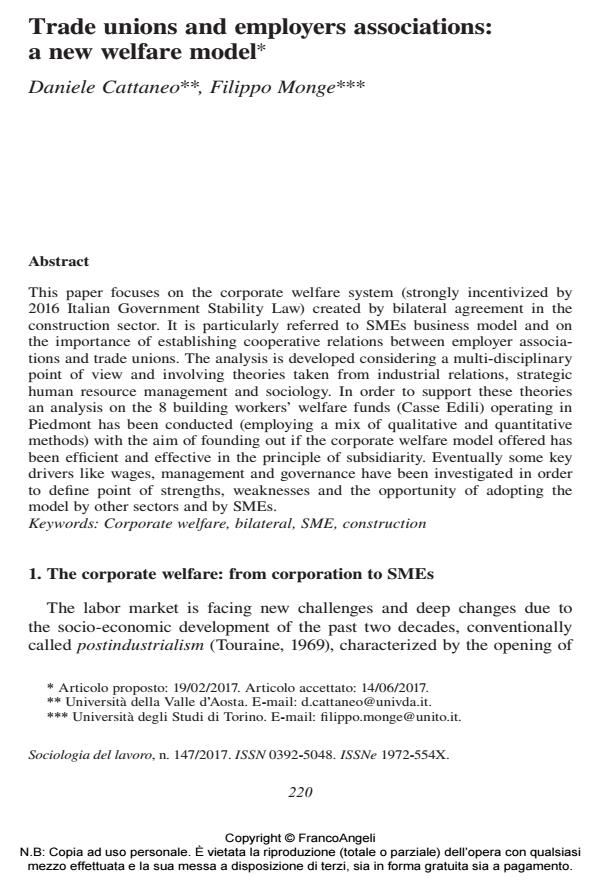Trade unions and employers associations: a new welfare model
Journal title SOCIOLOGIA DEL LAVORO
Author/s Daniele Cattaneo, Filippo Monge
Publishing Year 2017 Issue 2017/147
Language English Pages 18 P. 220-237 File size 140 KB
DOI 10.3280/SL2017-147012
DOI is like a bar code for intellectual property: to have more infomation
click here
Below, you can see the article first page
If you want to buy this article in PDF format, you can do it, following the instructions to buy download credits

FrancoAngeli is member of Publishers International Linking Association, Inc (PILA), a not-for-profit association which run the CrossRef service enabling links to and from online scholarly content.
This paper focuses on the corporate welfare system (strongly incentivized by 2016 Italian Government Stability Law) created by bilateral agreement in the construction sector. It is particularly referred to SMEs business model and on the importance of establishing cooperative relations between employer associations and trade unions. The analysis is developed considering a multi-disciplinary point of view and involving theories taken from industrial relations, strategic human resource management and sociology. In order to support these theories an analysis on the 8 building workers’ welfare funds (Casse Edili) operating in Piedmont has been conducted (employing a mix of qualitative and quantitative methods) with the aim of founding out if the corporate welfare model offered has been efficient and effective in the principle of subsidiarity. Eventually some key drivers like wages, management and governance have been investigated in order to define point of strengths, weaknesses and the opportunity of adopting the model by other sectors and by SMEs.
Keywords: Corporate welfare, bilateral, SME, construction
Daniele Cattaneo, Filippo Monge, Trade unions and employers associations: a new welfare model in "SOCIOLOGIA DEL LAVORO " 147/2017, pp 220-237, DOI: 10.3280/SL2017-147012